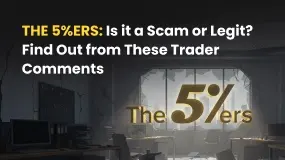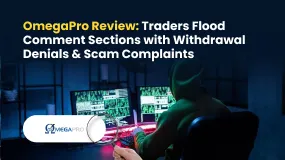简体中文
繁體中文
English
Pусский
日本語
ภาษาไทย
Tiếng Việt
Bahasa Indonesia
Español
हिन्दी
Filippiiniläinen
Français
Deutsch
Português
Türkçe
한국어
العربية
How to Place A Stop Loss Order in Forex Trading
Abstract:As a forex trader, your first responsibility is to protect your trading account from being obliterated by Forex losses.

One of the beast ways to ensure this does not happen is to use a stop-loss order to limit your risk exposure. Stop losses are most effective at protecting capital from being lost through indecision. The proper use of stop losses can increase the degree of control an individual has in managing risk. In this article, we will discuss the main points related to a stop-loss in forex and list some effective strategies for placing stop orders.
What Is A Stop Loss?
A stop-loss order is a type of advance order that allows you to automatically exit a position in order to limit losses and reduce risk exposure when price movements are more adverse than you are willing to accept. Sometimes called a stop loss, stop order or stop market order, this tool is an automatic instruction to sell an open position when the price drops to a pre-set losing limit, ensuring your losses do not grow too big. As the stop loss is a standard free feature of all trading platforms, it's one of the most important risk management tools in a forex traders armoury to mitigate against losses. There are 3 types of stop loss orders:
Percentage Stop
A percentage stop loss order is exactly what it sounds like. Instead of telling the broker at what exchange rate you'd like your order to be closed, you simply tell them what percent of your entire invested amount you are ready to lose. For example, if you are willing to risk 3% of the value of your trading account, you can set a stop-loss equal to 3% of the size of the account.
Volatility Stop
A volatility stop is when a trader indicates how much volatility of an asset is too much for them. Setting your stop-loss based on volatility is a prudent method given that it is based on a currency pair's price movements in the past, which can be a good indicator of future performance.
There are a number of ways you can track volatility in order to place your stop-loss order at a safe distance with the most popular ones involving the use of Bollinger bands and the average true range (ATR) indicator.
Chart Stop
A chart stop is the most common stop loss order of them all. For example, if you the current exchange rate of EUR/USD is 1.18156 and you think that it may increase to 1.20000 but you are not really sure. Other signs say that it could even drop to 1.15000. So, what you do is you place a stop loss order at 1.16000. If the exchange rate drops to this amount, it's almost guaranteed to continue falling, so it might as well cut your losses short with this order.
In general, Stop-Loss orders for SELL trades are always placed above entry / current price, while Stop-Loss orders for BUY trades are always placed below entry / current price.
Time Stop
These stop-losses are set based on a pre-specified period. For instance, you can choose to close a trade position at the close of the day, or when the Tokyo-London overlap is over. On Friday, you can decide to close the trades you don't wish to hold over the weekend.
Why Is A Stop Loss Important?
No matter how closely one might try to monitor the market, it is impossible to accurately predict Forex market movements. even the savviest trader can find themselves on the adverse side of a market move. When severe market dips happen, stop loss trading can help to close out your position and prevent excessive losses.
Stop-losses prevent large and uncontrollable losses in volatile trades. If youre not using stop-losses, it's only a matter of time when a large losing position will get out of control and wipe out most of your trading profits, eventually even your entire account. Here are some advantages of using stop loss orders:
-It provides protection from excessive losses
-Enables investors for better control of their account
-Helps to monitor multiple deals
-Automatically executed
-Easy implementation
-Allows you to decide the amount you are willing to risk
-Promotes discipline
Tips on Using Stop Loss in Trading
To set your stop loss like a professional trader in forex, here's what you have to do:
1. Determine your stop-loss placement in advance
Before entering into a trade, you need to be very clear on the level of risk you will take in that trade. If you have no idea where you should place your stop-loss or when to get out of that trade, then don't take this trade.
2. Avoid very tight or wide stops
Avoid using very tight stop-loss orders unless the trade setup warrants such a move. For example, if you have a profit target of 100 pips on the EUR/USD currency pair in a volatile market, you are better served using a wider stop-loss to accommodate the price volatility.
The opposite of very tight stop-loss orders is very wide stop-loss orders, which either increase your chances of making huge losses by being overly exposed to the markets or cause you to trade very small positions. Follow the above guidelines to ensure that you place your stop-loss orders at the right distance, neither too wide nor too short.
3. Use a simple stop-loss strategy
Trade in the overall trending direction with a simple stop loss method. Don't complex your trading journey with multiple stop loss method. Choose one which is logical and straightforward to you.
4. Do not set stop loss on support and resistance levels
Never place your stop-loss orders exactly on a resistance or support line as price tends to whipsaw around such areas as the bulls and the bears fight for control. Always leave a safe distance between a support or resistance level and your stop-loss order.

Disclaimer:
The views in this article only represent the author's personal views, and do not constitute investment advice on this platform. This platform does not guarantee the accuracy, completeness and timeliness of the information in the article, and will not be liable for any loss caused by the use of or reliance on the information in the article.
Read more

WikiEXPO Dubai 2025 Concludes Successfully — Shaping a Transparent, Innovative Future
On November 11, WikiEXPO Dubai 2025, hosted by WikiGlobal and co-organized by WikiFX, successfully concluded. As one of the world’s most influential Fintech expos, this event brought together more than 570 regulatory representatives, industry leaders, and innovation pioneers from across the globe. Through in-depth discussions on core issues such as regulatory compliance, the forex market, investment strategies, and sustainable finance, the event delivered a profound experience that masterfully blended intellectual depth with actionable insights.

The 5%ers Review: Is it a Scam or Legit? Find Out from These Trader Comments
Did you face reduced leverage and hiked fees without any explanation from The 5%ers broker? Do you find The 5%er rules strange for getting a funded account from this prop trading firm? Has the broker closed your trade inappropriately, preventing you from making gains in the forex market? All these allegations have dominated The 5%ers review segment online. Looking at this, the WikiFX team investigated and found some startling comments against the broker. In this article, we have shared those complaints. Read on!

BROKSTOCK Exposed: Traders Report Login Errors, Withdrawal Issues & Incompetent Customer Support
Is your BROKSTOCK trading account full of inefficiencies? Do the recurrent BROKSTOCK login errors prevent you from opening and shorting positions at a favorable price? Has the broker failed to honor your withdrawal requests? Do you face order execution price issues? Has the customer support service failed to resolve your queries? You are not alone! In this BROKSTOCK review article, we have shared some complaints that need a close introspection. Read on to explore them.

OmegaPro Review: Traders Flood Comment Sections with Withdrawal Denials & Scam Complaints
Has your deposit and withdrawal scenario worsened after the initial good experience at OmegaPro, a UK-based forex broker? Does the broker ask you to invest when withdrawing your funds? Did the broker officials trap you with their false promises of compound interest on your deposit? Have you found it impossible to transfer funds from your OmegaPro login to another broker’s account? Do you witness a lack of support when dealing with these unfortunate trading circumstances? These are no longer isolated complaints — they have allegedly become the reason for OmegaPro’s tarnished trust and reputation within the trading community. Read on as we share the OmegaPro review in this article.
WikiFX Broker
Latest News
BASF CEO: EU CO₂ Trading Is A "Destruction Mechanism" For European Industry
Is Fyntura a Regulated Broker? A Complete 2025 Broker Review
Zetradex Exposed: Withdrawal Denials, Account Freeze & Bonus Issues Hurt Traders
Is Forex Zone Trading Regulated and Licensed?
PINAKINE Broker India Review 2025: A Complete Guide to Safety and Services
Exness Restricted Countries List 2025 Explained
Is Uniglobe Markets Legit? A 2025 Simple Guide to Its Safety, Services, and User Warnings
Is Inzo Broker Safe or a Scam? An Evidence-Based Analysis for Traders
WikiEXPO Dubai 2025 “Welcome Party” Kicks Off Tonight!
He Trusted a WhatsApp Group and Lost RM659,000
Currency Calculator



